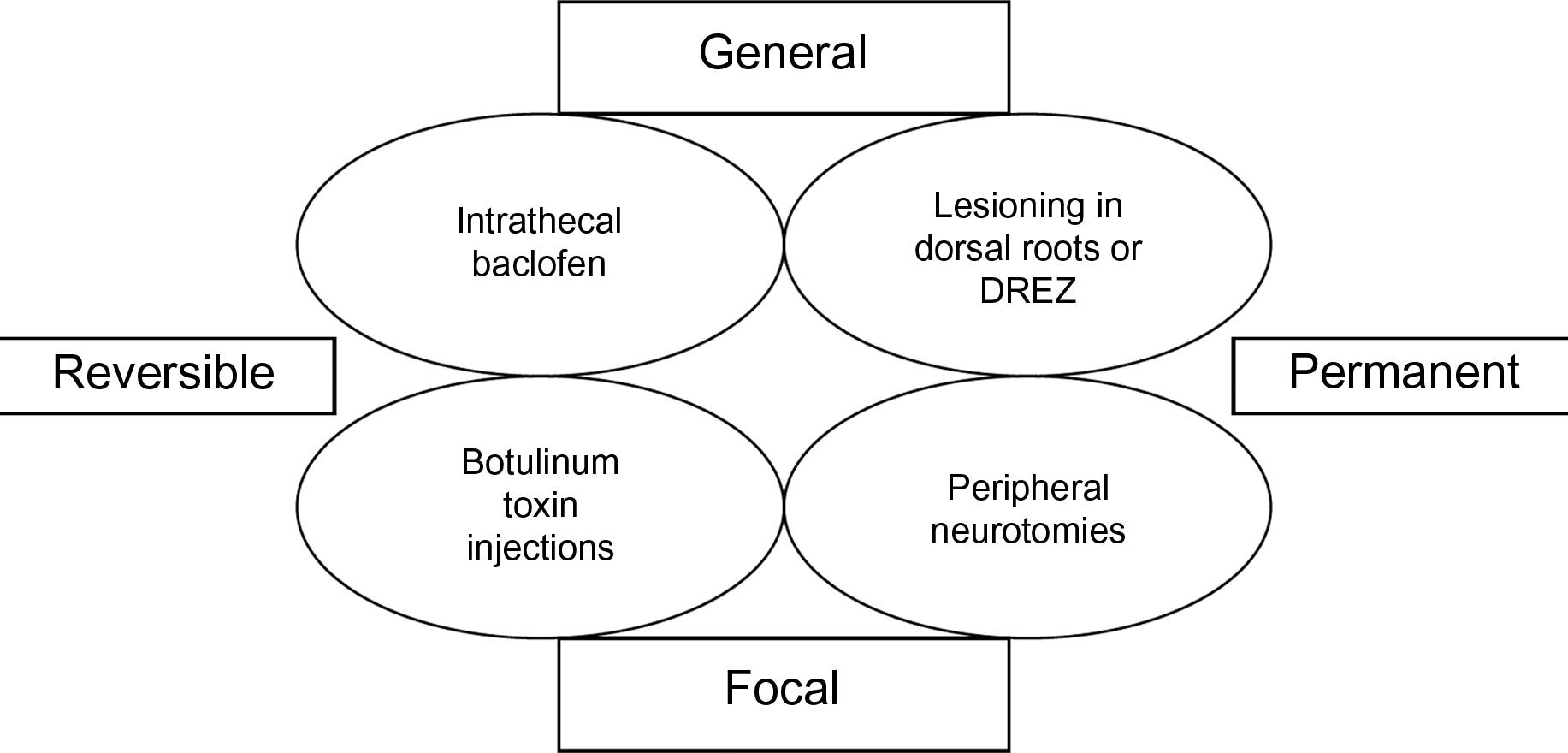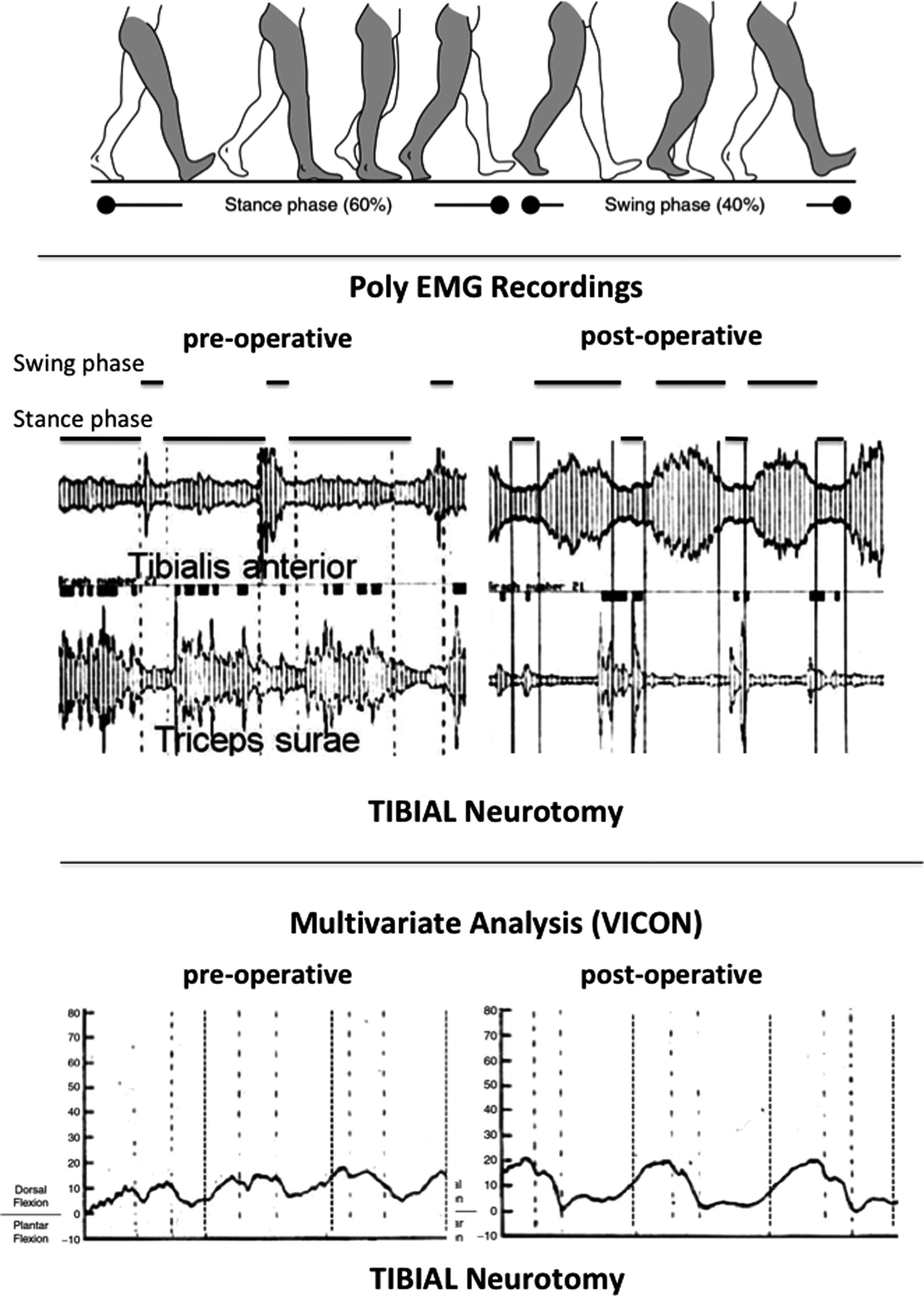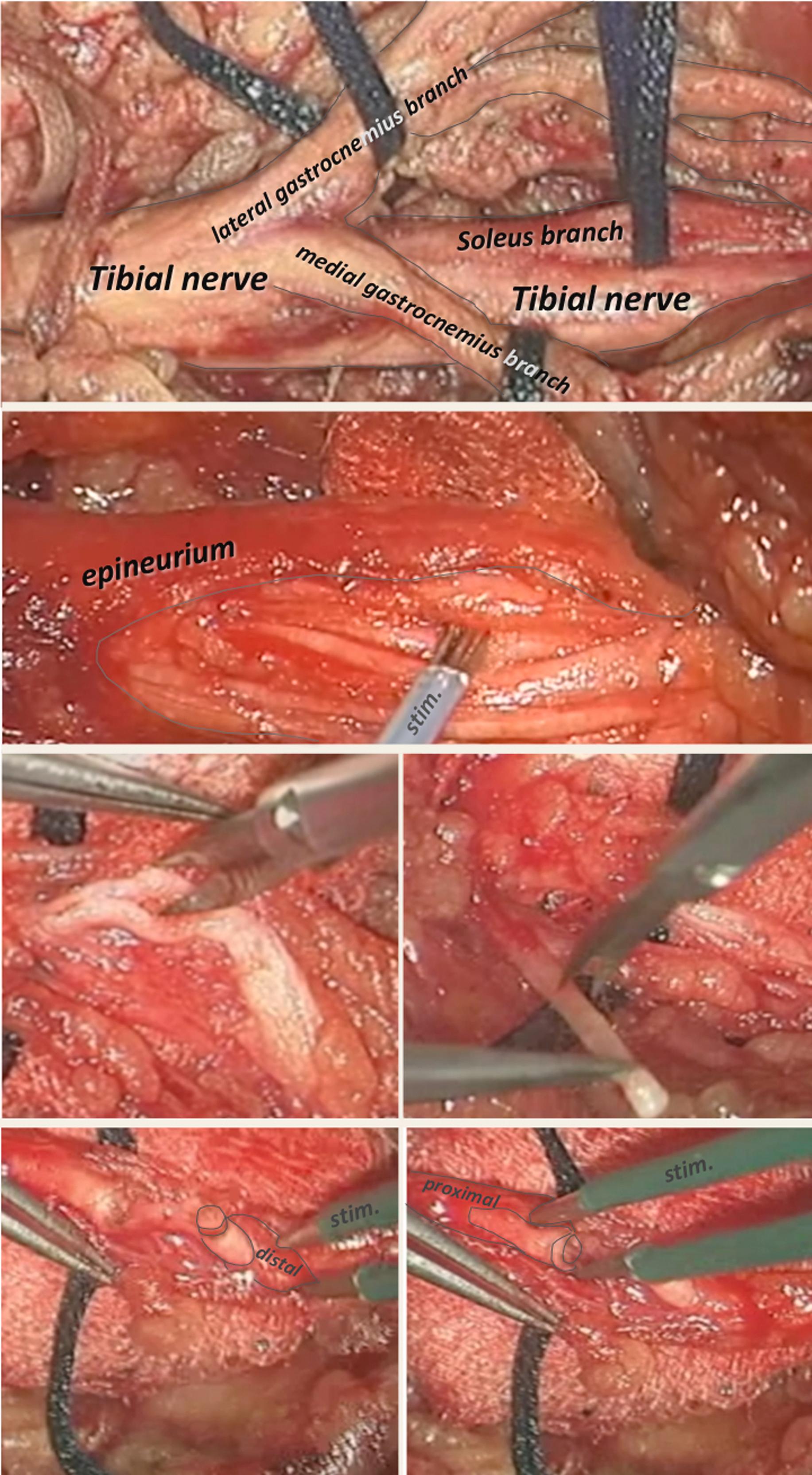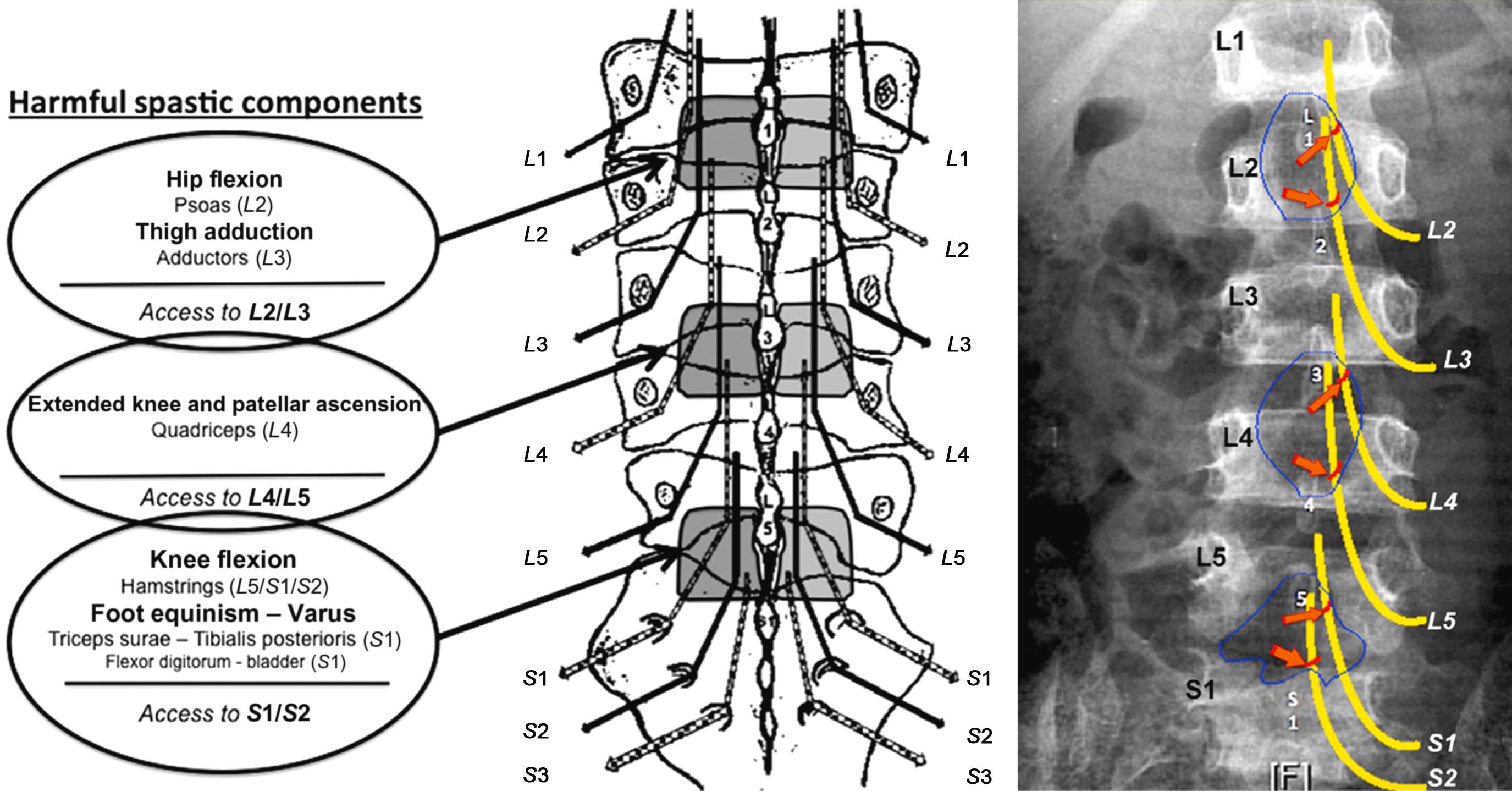Physical Address
304 North Cardinal St.
Dorchester Center, MA 02124
Spasticity should only be treated when excess of tone leads to functional impairment, discomfort, pain, and deformities. Functional neurosurgery can be a recourse when spasticity cannot be controlled by physical therapy, relaxant medications, and botulinum toxin injections. Spasticity is defined as a velocity-dependent resistance to passive movement of a joint and its associated musculature, and is characterized by hyperexcitability of the stretch reflex. Disorders are related to the failure of descending supraspinal inhibition. Focal dystonia is often associated with spasticity but has to be distinguished. Dystonia is an involuntary movement caused by a sustained increase in muscle tone and resulting in abnormal posturing or muscle spasm. Spasticity and dystonia have completely different pathophysiology: lesion of the corticospinal tract for spasticity and of the basal ganglia for dystonia. But given the anatomical proximity of these two structures, the two abnormal entities can be associated.
The neurological procedures should be selective in the sense that only the excess of tone must be reduced without suppressing the useful muscular tone or impairing the residual motor/sensory functions. In the patients who retain some—often masked—voluntary motricity, the aim is to improve or restore voluntary function. In patients with poor residual functions, the aim can only be to stop the evolution of orthopedic deformities and to improve comfort and ease of care.
The neurosurgical methods for treating spasticity are classified according to whether their impact is general or focal and whether the effects should be temporary or permanent ( Fig. 35.1 ). Besides botulinum toxin, methods include intrathecal baclofen (ITB) therapy, as well as lesioning techniques directed toward peripheral nerves, dorsal roots (DRs), the spinal cord, or the dorsal root entry zone (DREZ).

Because spasticity features and also objectives of treatment differ from one patient to another, decisions should be taken in a “tailored” fashion and within the frame of a multidisciplinary team. Neurosurgical management of spasticity and eventual associated focal dystonia are quite different according to patients’ etiology and age. Surgery at pediatric age should take into account the continuous development of locomotor and cognitive functions of the child, while in adults the situation is often relatively fixed.
Peripheral neurotomy (PN) is indicated when spasticity is focal, that is, localized to a few muscular groups supplied by one single or a few peripheral nerves, only after repeated botulinum toxin injections are revealed insufficient . PN consists in partial sectioning of the motor fascicles corresponding to the muscles harboring excessive spasticity; the procedure acts by interrupting the segmental reflex arch at both its afferent and efferent pathways. PN must not involve sensory fibers, as their damaging would result in paresthesias and secondary neuropathic pain. Empirically it is agreed upon that 60% of all motor fascicles to the targeted muscles have to be sectioned to be effective. Surgery aims not only to reduce spasticity but also to improve function by reequilibrating the tonic balance between agonist and antagonist muscles as shown in Fig. 35.2 .

Tibial neurotomy for the spastic dystonic foot and obturator neurotomy for spastic flexion–adduction of the hip are the most common neurotomies. PN can also be indicated for spasticity/focal dystonia in the upper limb: musculocutaneous neurotomy for elbow in flexion, median (and ulnar) neurotomy(ies) for flexion of the wrist and fingers to improve at least cosmetics and prehension if hand retains residual motor function.
Before deciding PN, local nerve blocks with a (2–3 hours) long-lasting anesthetic (bupivacaine among them) can be useful to evaluate the possible hidden motor power of the antagonist muscles and to determine whether the eventual articular limitations result from spasticity or musculotendinous contractures/articular ankyloses. Also, local blocks, as well as botulinum toxin injections (being used as a “prolonged” test of several months), by mimicking the effect of corresponding neurotomy(ies), allow the patients and the medical team to estimate the benefit that would follow the surgery.
Intraoperative mapping is fundamental to achieve effective and selective PN. General anesthesia must be induced without long-lasting myorelaxants so that the muscular responses to electrical stimulation can be detected. Nitrous oxide and propofol should be avoided because they modify reflex excitability. Use of the operating microscope for precise dissection is recommended ( Fig. 35.3 ) . Individual mapping of branches/fascicles is required, because of the frequent variations in the emergence and distribution of the nerve branches. Bipolar stimulation is preferred to monopolar stimulation to avoid spread of the electric current. Stimulation (such as the one using the Innopsys Nimbus I-Care multifunctional neurostimulator, manufactured by Innopsys, Parc d’Activités Activestre, 31390, Carbonne, France, www.innopsys.com ) is performed with a frequency of 2 Hz and at a (just above the threshold) intensity (currently 200 μA) to avoid electric diffusion and, therefore, incorrect interpretation. When fascicles are tightly apposed, a triple stimulation probe composed of an anode between two cathodes is the more accurate way of stimulating because of less current diffusion. The responses to stimulation can be visualized in the form of clinically observable muscular twitches in the corresponding limb. The surgeon may also have recourse to electromyogram (EMG) recordings. Extreme care should be taken to recognize false-positive responses by diffusion of current to neighboring fascicles and false-negative responses due to short circuits of current caused by serosities in between the contacts of the stimulation probe.

Once all motor branches/fascicles have been identified, those considered to be targeted are marked separately with different-colored threads. According to preoperative program, variable proportions (60%–80% depending on the degree of preoperative spasticity) of the selected motor branches/fascicles are cut. The effect of each sectioning is then evaluated by comparing the intensity of the muscular response to electric stimulation, proximally and then distally to the section. If the response after proximal stimulation is still intense, further sectioning is performed.
Based on Sherrington’s experiments, Foerster performed the first lumbo-sacral dorsal rhizotomies (DRhs) in cerebral palsy (CP) patients. As a general rule he recommended “to resect the dorsal roots from L2 to S2 with the exception of the fourth lumbar root since this root generally guarantees the extensor reflex of the knee, so very necessary for standing and walking” . To preserve further the innervation of the muscles responsible for “useful tone,” the quadriceps and abdominal and gluteal muscles in particular, Gros introduced in 1976 topographic selection of the roots by their electrical stimulation, technique termed sectorial posterior rhizotomy . Apart from effects on the lower limbs, Gros observed in this CP patients decrease in spasticity in the upper limbs and improvement in speech and swallowing, so-called distant effects. Also in 1976 Fasano et al. developed the functional posterior rhizotomy, a method based on stimulation of the DR/dorsal rootlets with corresponding EMG recordings . Exaggeration of the duration or of the extent of the muscular responses indicates the particular roots that must be surgically sectioned.
At present, the most used techniques are based on the Fasano’s principle of determining the DRs/rootlets to be cut from the intensity of the muscular responses to their stimulation. Roots/rootlets can be accessed through two different types of approaches: a one-piece laminotomy performed from L1 to S1, as developed by Peacock and Arens and Abbott et al. , or a limited laminotomy of one/three Th11–L1 vertebrae in the front end of the conus medullaris, as popularized by Park et al. .
To reduce invasiveness of the intraspinal approach via laminotomies, and at the same time access each of the lumbosacral roots—individually—at their corresponding dural sheath, we developed what we termed “keyhole interlaminar DRh” ( Fig. 35.4 ) . With this technique, each enlarged interlaminar space enables to access intradurally, two roots on one side (one upward and one downward). Steps are the following ( Fig. 35.5 ) . The L1–S2 lumbosacral spine is exposed posteriorly through a midline skin incision from Th12 to S1. The chosen interlaminar spaces (two, or more often three, according to patient’s clinical presentation and therefore roots selected to be targeted) are extended in height by resecting the lower two-thirds of the upper lamina and the upper three-fourths of lower lamina. The spinous processes and their interspinous ligaments are respected. Through the obtained fenestration(s), flavum ligament is resected, and dura and arachnoid are incised on the midline for a height of approximately 2 cm. The L2 and L3 roots can be reached via a L1–L2 opening, L4 and L5 via a L3–L4 opening and S1 and S2 via a L5–S1 opening.

![Figure 35.5, KIDr: (A) schematic drawing of the organization of the operating room and surgical team. The curved arrow indicates that the surgeon changes position and side to obtain access to the targeted root. (B) Exposure of L1–S1 laminae on both sides, with L1–L2, L3–L4, and L5–S1 IL fenestrations. (C) At each level to be fenestrated the inferior two-thirds of upper lamina and the superior three-fourths of the lower lamina are resected on midline and flavum ligament removed so that dura and arachnoid can be opened (on midline) over 20–30 mm in height. Note that the spinous processes and interspinous ligaments are respected. *Exposure and individualization of the VRs and DRs at the exit from or entry to their dural sheath. (D) Surgeon’s view is an (±45 degrees) oblique trajectory, which passes underneath the arch formed by the (respected) interspinous ligament, so that the contralateral roots be accessed at exit to (for VR)/entry from (for DR) corresponding dural sheaths. Two radicular levels can be reached per IL fenestration, one upward and the other downward. (E, G, J and K) Microsurgical steps per radicular level are as follows. (E) Stimulation of VR, at 2 Hz and 200 μΑ, Anatomic mapping for topographic identification of the radicular levels. In this illustrative case, stimulation (at 2 Hz and 200 μA) of the L4 VR elicits an EMG response predominantly in the quadriceps muscular group. Inset: The graphical element corresponds to magnification of a direct EMG response (time scale: 0.3 second). (F) Stimulation of DR at 50 Hz and 1 mA. Anatomy is characteristic, with the VR being situated anteriorly and the DR posteriorly. The DR is approximately twice as thick as the VR. [Physiological testing for estimating the excitability of the root–spinal cord circuitry.] In this illustrative case, stimulation (at 50 Hz and 1 mA) of the S1 DR elicits an abnormal EMG response: (1) sustained that is lasting after the cessation of the stimulation and (2) spreading that is not only at the level of the soleus muscle, but also outside the corresponding S1 myotome. Note the spreading of response to the hamstrings, flexor digitoris, and anal sphincter muscles. (G) Placement of intramuscular electrodes. Patient is installed in prone position on bolsters–cushions in order to minimize the lumbar lordosis and thus open the interlaminar spaces, while avoiding thoracic and abdominal compression and preserving abdominal venous return. All pressure points are padded to prevent eventual ulcers. Sixteen (8×2) intramuscular needle electrodes are inserted in lower limbs bilaterally. (H and I) According to preoperative chart and adjustments from monitoring, coagulation and final sectioning of DR is performed (in this case: two-thirds of the dorsal rootlets of this root). DR , Dorsal root; EMG , electromyogram; IL , interlaminar; KIDr , keyhole interlaminar dorsal rhizotomy; VR , ventral root. Figure 35.5, KIDr: (A) schematic drawing of the organization of the operating room and surgical team. The curved arrow indicates that the surgeon changes position and side to obtain access to the targeted root. (B) Exposure of L1–S1 laminae on both sides, with L1–L2, L3–L4, and L5–S1 IL fenestrations. (C) At each level to be fenestrated the inferior two-thirds of upper lamina and the superior three-fourths of the lower lamina are resected on midline and flavum ligament removed so that dura and arachnoid can be opened (on midline) over 20–30 mm in height. Note that the spinous processes and interspinous ligaments are respected. *Exposure and individualization of the VRs and DRs at the exit from or entry to their dural sheath. (D) Surgeon’s view is an (±45 degrees) oblique trajectory, which passes underneath the arch formed by the (respected) interspinous ligament, so that the contralateral roots be accessed at exit to (for VR)/entry from (for DR) corresponding dural sheaths. Two radicular levels can be reached per IL fenestration, one upward and the other downward. (E, G, J and K) Microsurgical steps per radicular level are as follows. (E) Stimulation of VR, at 2 Hz and 200 μΑ, Anatomic mapping for topographic identification of the radicular levels. In this illustrative case, stimulation (at 2 Hz and 200 μA) of the L4 VR elicits an EMG response predominantly in the quadriceps muscular group. Inset: The graphical element corresponds to magnification of a direct EMG response (time scale: 0.3 second). (F) Stimulation of DR at 50 Hz and 1 mA. Anatomy is characteristic, with the VR being situated anteriorly and the DR posteriorly. The DR is approximately twice as thick as the VR. [Physiological testing for estimating the excitability of the root–spinal cord circuitry.] In this illustrative case, stimulation (at 50 Hz and 1 mA) of the S1 DR elicits an abnormal EMG response: (1) sustained that is lasting after the cessation of the stimulation and (2) spreading that is not only at the level of the soleus muscle, but also outside the corresponding S1 myotome. Note the spreading of response to the hamstrings, flexor digitoris, and anal sphincter muscles. (G) Placement of intramuscular electrodes. Patient is installed in prone position on bolsters–cushions in order to minimize the lumbar lordosis and thus open the interlaminar spaces, while avoiding thoracic and abdominal compression and preserving abdominal venous return. All pressure points are padded to prevent eventual ulcers. Sixteen (8×2) intramuscular needle electrodes are inserted in lower limbs bilaterally. (H and I) According to preoperative chart and adjustments from monitoring, coagulation and final sectioning of DR is performed (in this case: two-thirds of the dorsal rootlets of this root). DR , Dorsal root; EMG , electromyogram; IL , interlaminar; KIDr , keyhole interlaminar dorsal rhizotomy; VR , ventral root.](https://storage.googleapis.com/dl.dentistrykey.com/clinical/Neurosurgicallesioningproceduresforspasticityandfocaldystonia/4_3s20B9780128150009000356.jpg)
Then the microscope is installed for a trajectory oblique at approximately 45 degrees, so that following the principles of keyhole surgery, the surgeon’s view passes underneath the (respected) interspinous ligament. The goal is to access—intradurally—the contralateral roots, with their ventral and dorsal components, respectively, at exit to/entry from the corresponding dural sheath. At each level, muscle responses to stimulation are checked using a bipolar electrode to avoid spreading of current. Ventral root (VR) is stimulated first, to identify its innervation territory and thereby confirm topographical level; this phase is “anatomical mapping.” Stimulation is at 2 Hz with an intensity of 200 μΑ (to 500 μA), that is, slightly above threshold. To be noted, a muscle response by DR stimulation would require three to five times higher intensity. Then the DR undergoes “physiological testing” to evaluate excitability of its contained circuitry. Stimulation is a train of 1 second at frequency of 50 Hz and with an intensity of 1 mA, not to have excessive diffusion of current. Excitability is considered “exaggerated,” according to Fasano’s classification , when the muscular responses are sustained and/or spreading out “normal” myotomes. This testing is to confirm or modify the percentage of the dorsal rootlets, previously specified in the preoperative chart, to be cut. The amount of cut generally ranges between one-third and four-fifths of a root’s constituting rootlets. Neurophysiological mapping and testing ( Fig. 35.5 ) are followed by the microsurgical sectioning of each monitored root. Noteworthy, same steps are performed at each targeted radicular level, on one side first, then on the other side.
To be effective there is an empirical consensus that an overall amount of 60% of all the targeted DRs should be cut, with a different proportion according to the level and function of the roots involved and, of course, their implication in the “conveying” of the harmful components of the spasticity .
An overall amount of 60% of cutting is compatible with the absence of lasting sensory deficits, as shown by a long-term study of somatosensory evoked potentials (SEPs) after lumbosacral DRh .
Become a Clinical Tree membership for Full access and enjoy Unlimited articles
If you are a member. Log in here